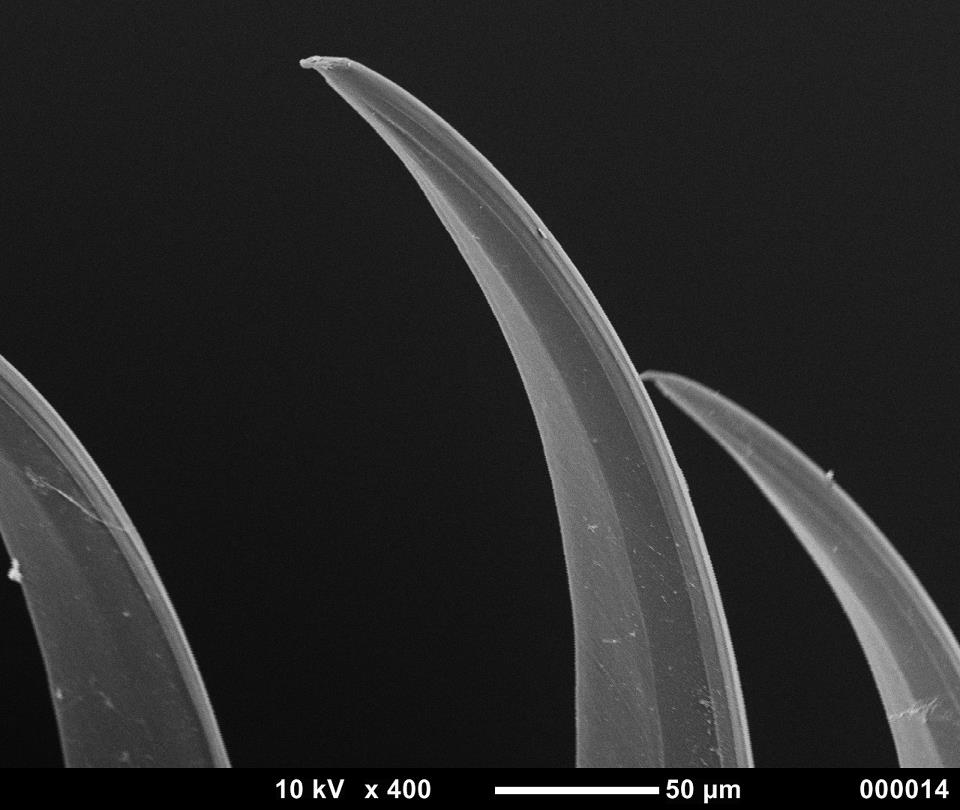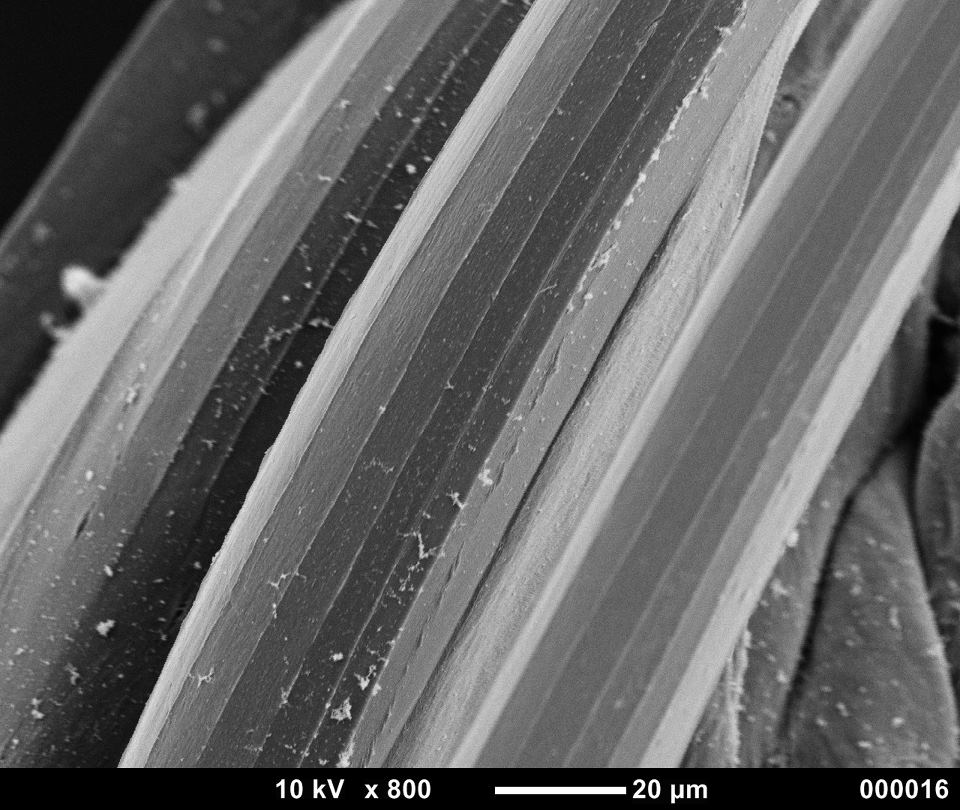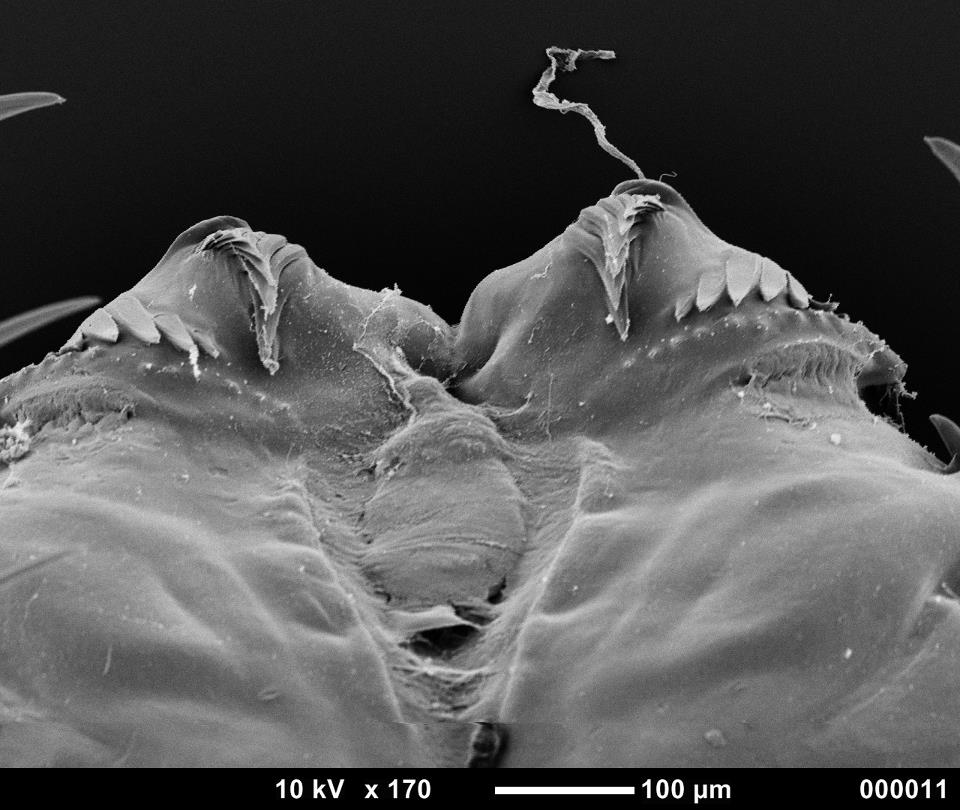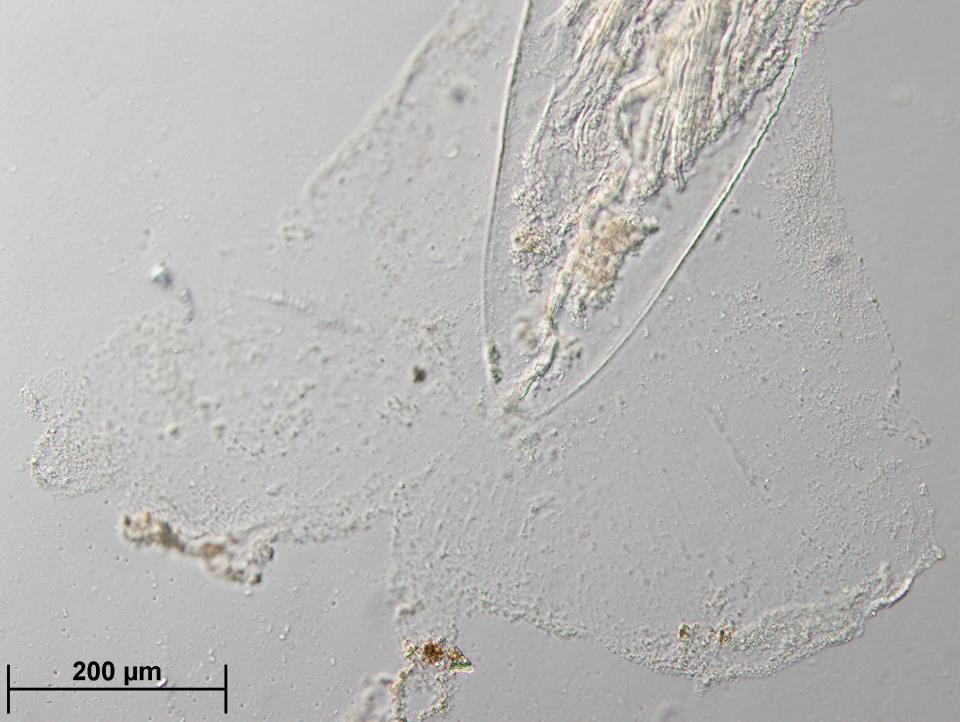External Morphology
The general shape of a chaetognath resembles an arrow (VIMS)
This arrow-shape is made up of a long shaft-like body, with either one or two
pairs of fins (may be partially or completely rayed (SERTC)), and a caudal fin,
that resemble the feathers of an arrow.
On their head, chaetognaths possess multiple pairs of grasping
spines, which may or may not serrate (fig 1 & 2). Chaetognaths also commonly have two
paired rows of teeth, although some may three, whilst others are known to have
only one or even none (fig 3 & 4) (Szaniawski 2002, Foster 2006). For species that have two
pairs, the posterior teeth are more numerous and usually also longer than the
anterior, as well as been a different shape. The primary use of the grasping spines
is to capture prey, whilst the teeth are believed to puncture the prey to allow
for the penetration of toxins (Foster 2006). As the grasping spines are solid,
and therefore cannot inject toxin into prey, it is hypothesized that the
papillary pores (located next to the posterior teeth) may be where the toxin is
being produced or stored (Foster 2006). All chaetognaths also have a hood, which
completely covers the head to give the body a streamlined shape whilst swimming
(Foster 2006).
The fins (fig 5) of chaetognaths are composed of epidermal folds,
and provide more services than just propulsion and directional control. In some
species, the fins may be used to brood eggs once fertilised, and for adult
chaetognaths, the fins may be filled with a gel-like substance that assists to offset
the weight their gonads (Foster 2006).

Figure 1: SEM view of a non-serrated grasping spine.

Figure 2: SEM view of the structure of a grasping spine.

Figure 3: SEM view of posterior and anterior teeth of a chaetognath.

Figure 4: SEM view of posterior and anterior teeth of a different species of chaetognath.

Figure 5: Dissection microscope view of the caudal fin of a chaetognath. |